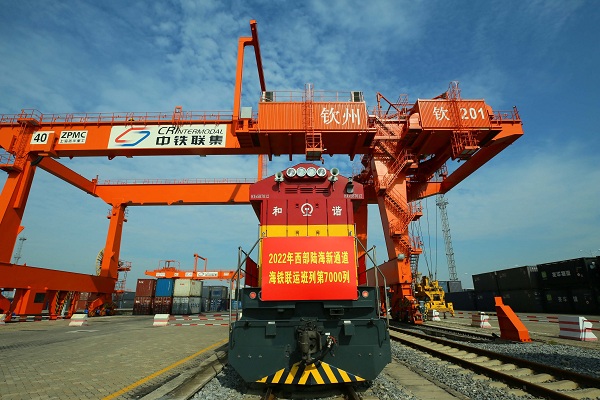Land-sea trade corridor fulfills annual transportation target

The 7,000th sea-rail intermodal container train on the New International Land-Sea Trade Corridor waits for departure. [Photo by Zhong Yujie for en.gxzf.gov.cn]
The 7,000th sea-rail intermodal container train on the New International Land-Sea Trade Corridor departed from Qinzhou on Oct 21, marking the completion of the corridor's annual transportation target 71 days ahead of schedule.
The train was loaded with cargo like paper pulp, quartz sand, and building ceramics. It arrived in Chongqing after three days of travel.
Cargo categories transported on the corridor have now expanded to over 640, covering new energy vehicles from China, tapioca flour from Thailand, sticky rice from Vietnam, and bananas from ASEAN countries. The corridor has effectively promoted regional economic development, as well as stabilized industrial and supply chains.
Su Ting, general manager of Guangxi Beibu Gulf Port Logistics, said that the operation area of the corridor just added 29 stations in 17 cities in five provinces and autonomous regions, including Hubei, Henan, as well as Hebei, in 2022. Currently, cargo transported on the corridor can reach 113 stations in 60 cities in 17 provinces, autonomous regions, and municipalities, covering all 12 regions in West China and parts of Central China.
The total import and export volume of containers between China and RCEP member countries via the corridor during the first nine months of 2022 stood at 52,068 twenty-foot equivalent units (TEUs), accounting for 45 percent of the corridor's total handling volume.
